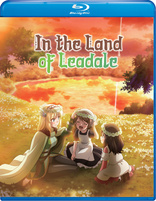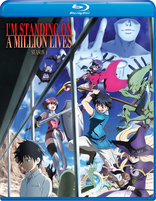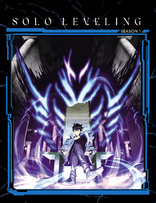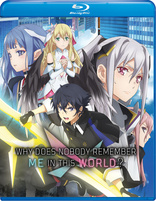 It's time for anime home videos to move on from these age ratings
It's time for anime home videos to move on from these age ratings
One of the most notable (though not-so talked about) aspects about anime is the presence of a "rating" on its home videos.
Compare that with home videos from every other company (i.e. Warner, Universal, Disney, Sony, Paramount, Amazon MGM, Lionsgate and others) where they just have "Not Rated" (the only non-anime releases afaik that have an "age rating" are some recent releases of Disney+ series like The Mandalorian and Adult Swim shows).
This practice of putting in a "rating" on home videos was due to what happened with Blockbuster video and other rental stores in the 90s. At the time, the animation age ghetto was in full force, thus there was this preconceived notion that anything animated was for kids and kids only. When anime first came, companies pretty much could only afford OVAs and movies as they operated with limited budgets (given that the US anime industry was pretty much an underground cottage industry founded and supported by a small group of dedicated fans when everyone else dismissed it as being an unviable business) and TV anime was prohibitely expensive. These anime OVAs and movies that came back in the day very were, more often than not, perverse exploitation schlock that wouldn't look too out of place from Troma Entertainment fare.
This would clash horribly with the animation age ghetto mentality, as there was a number of parents renting an anime for their kids thinking it's yet another cartoon show just because it's animated, only to see nothing but violent and sexual content, and thus they got angry at those stores for not monitoring these videos. Combine this with people looking for anything to shut down the animation age ghetto mentality and it's then audience being college-age people with a disposable income, a new mentality was formed: that all anime was nothing but sordid, lecherous schlock. Anime was now stuck in this black-and-white bind with a wasteland in the middle: either cartoons for kids and kids only or, if it's not for kids, perverse ultra-violent schlock for adults only.
Facing a possible moral panic (already there was one about violent video games that would lead to the ESRB being established during this time), anime companies started putting "age ratings" on their releases to remind people that it's not kiddy stuff (and also that it's not adult-only perverse ultra-violent schlock either). Another contributing factor for this decision was the sudden influx of a huge amount of people from demographics outside of college people getting into anime thanks to Kids WB and Toonami and Adult Swim introducing anime to the masses with shows like Pokemon and DBZ and Inuyasha respectively. These new demographics included kids and teenagers. Flash forward to a decade later, and Blockbuster and many a video rental store have kicked the bucket, thus eliminating the reason for putting these "age ratings" on home video, but it stuck and the practice still continues to this day.
Now that anime has reached mainstream status and is no longer underground stuff, why do anime companies still continue to "age rate" their home videos when everyone else can get away with leaving "not rated" (give praise to Discotek for not doing that) on their home videos and the reason behind putting age ratings on anime home videos (Blockbuster Video) no longer exists? It feels bizarre when you stop and think about for some time, as if anime shows have to self-segregate in some shape or form, even when the main reason behind it no longer exists. It's served its purpose and is now a relic at this point.
Retiring this practice would be the easy way out, especially as people can easily be informed of the show's content on streaming services like Netflix, Amazon Prime, Hulu and others, as they always rate the stuff, and a lot of people are subscribed to at least one of the services so putting on a rating on home video is just redundant.
Now the hard way out would be what amounts to doing an "ESRB but for home video", much like the rest of the world. This would be extremely complicated for a number of reasons
* Financial: If we use the ESRB as a reference, it costs anywhere in the 3-4-digits range to get something rated, and with home video sales on the decline, unless the costs to rate anything are in the low 3 digits (up to 500) at most, I don't see why it would be financially justifiable.
* Legal: Ratings cannot be legally enforced because it runs afoul of the free speech clause of the First Amendment as shown with the Brown v. Entertainment Merchants Association ruling. This leads us to....
* Social: Unlike our neighbors to the north and south of the border, America has a cultural aversion to and avoidance of the "18+ only" rating, given that they automatically equate it with porn and efforts to destigmatize it have proven futile. Even in this day and age where online streaming is the norm, streaming services are hesitant on doing an "18+ only" rating (except maybe Amazon Prime) because the mere concept of that for anything but porn is unthinkable to Americans. As stated above, ratings cannot be legally enforced, so movie theaters, home video stores and video game stores instead operate purely as businesses and thus put "18+ only" at the bottom due to the decreased earnings potential (as apparently teenagers are typically the most reliably-profitable demographic). Even with the rise of streaming services and online shopping, they've yet to put the "18+ only" for anything but porn in practice due to the huge amount of negative cultural baggage it has (I'm sorry but Rebel Moon would would fall under "18+ only" in a reasonable American society). Imagine if major stores like Wal-Mart, Target, fye and others sold (non-porn) material that was rated "18+ only" and you needed to show an ID as proof of your age because the material was too extreme for the R limits. There would be lawsuits up the ass no matter how much the stores and consumes comply because there's always gonna be an extremely vocal minority who will fearmonger to no end.
At the end of the day, you can have all of it (where you have an ESRB but for all home video rating video releases from every company ever and all the complications that come with it) or none of it (anime companies retire "age rating" because it's a relic of a past era). Given the current state of things socially, I think it's better that we go with the latter. It's time for anime home videos to grow up and accept the Not Rated and that there's no need to "age rate" stuff now that anime's mainstream. It's no longer the 90s/00s so they need to get with the times.
Tl;dr age ratings on anime home videos are a relic of a past era when it was underground, and now that it's achieved mainstream status, the practice of putting in age ratings on anime home videos should be phased out.
Last edited by CSmith79; 06-30-2025 at 05:48 PM.
|




















 Threaded Mode
Threaded Mode